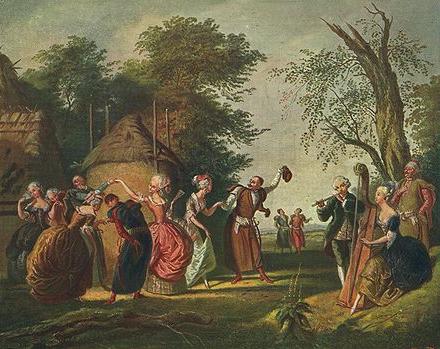(Polonaise: "Dance to lights")
|
It was Germany who became a most adoring fan of the Polonaise. Later when the Ladies appeared in the dance around 1645, its purpose was to offer the Lady in whose honor the ball or dance is given, to be able to greet the guests and to invite them to participate in the lively entertainment. In all of the aristocratic Courts of Northern Europe from Vienna to St. Petersburg, the Polonaise was the most stately of the dances and became the prelude to the balls of the highest sphere of society, as it was to Her Majesty's Bal Costumè on June 6th, 1844. |
|
Minuet | Paso Doble | Rhumba | Samba | Swing | Tango | Twist | Waltz | 'Champion' Dance Trivia | Who am I ? | Main Page |

Research/Page Design by Me © all rights reserved

